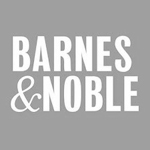David A. Ezzo has been involved with the study of Native American Indian history and culture for over thirty -five years. His interest in the subject matter first began when he earned his Indian Lore badge from Mr. Ronald P. Koch when he was 15 years old.
His interest in the topic continued when he served as an Indian Lore counselor at Camp Turner for four summers in 1979, 1980, 1981, and 1983.
David began his academic study of Native Americans when he earned a BA degree in Anthropology from SUNY Fredonia in 1985. While at Fredonia he wrote two published articles and co-wrote a third article with one of his professors, Dr. Alvin H. Morrison. This article was presented at the 16th Algonquian Conference and was published one year later in 1986.
David earned his MA in Anthropology from the University of Oklahoma in 1987. During his time at the University of Oklahoma he presented several papers including one at a Frontier Conference at OU in 1986 and also a paper at an Algonquian Conference. His MA thesis was also written on a Native American Indian topic. The title of his thesis “Female Status in Northeastern North America” was an historical survey of the roles of Native America women in a number of Algonquian societies.
During subsequent years David continued to attend and publish papers at Algonquian Conferences. He also continued to serve as a BSA Indian Lore merit badge counselor.
In August of 2006 he was appointed as an Adjunct Professor of Anthropology at Erie Community College (North Campus) where he taught an Introduction to Sociology course. David Ezzo has been on the faculty of Erie Community College, Genesee Community College, Villa Maria College and Niagara University.
David Ezzo and Michael Moskowitz have co-written several articles together including one article on Delaware Indian history and Land Claims cases, and one on the Stockbridge-Munsee land claims case and also a paper on Black Beaver, a Delaware Indian Chief.
Michael Moskowitz has had a lifelong interest in history, politics, law and genealogy. In 1988 he received a Bachelor of Arts Degree in Political Science with a minor in History from The George Washington University in Washington, D.C. and in 1991, a Juris Doctorate from American University-Washington College of Law, also in Washington, D.C. It was during law school that Michael studied the legal issues concerning American Indians and began researching this area in depth. While in Washington, Michael served as a volunteer Law Clerk for the Native American Rights Fund where he worked on several issues concerning several American Indian tribes located in the North East United States. Michael, along with co-author David Ezzo, has had several articles on legal-historical topics as they relate to specific native groups of the North East United States, published that were presented at the Algonquian Studies Group. Michael founded and ran his own consulting firm dedicated to American Indian affairs for several years. He has been a volunteer with the Boy Scouts of America for many years, in which among other things he teaches Scouts about American Indian history. He currently lives with his wife Beth and two boys in suburban Long Island, New York.
Papers on Historical Algonquian and Iroquois Topics
Second Edition
by David A. Ezzo and Michael H. Moskowitz

Papers on Historical Algonquian and Iroquois Topics
Second Edition
by David A. Ezzo and Michael H. Moskowitz
Published Aug 22, 2021
231 Pages
6 x 9 Black & White Paperback and 6 x 9 Black & White Dust-Jacketed Hardback
Genre: HISTORY / Indigenous Peoples of the Americas



